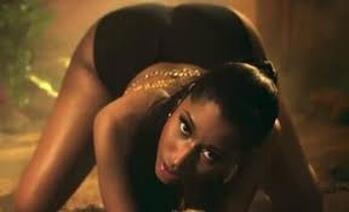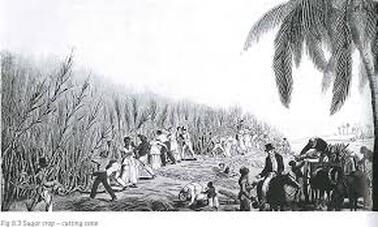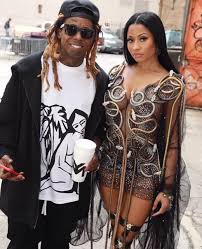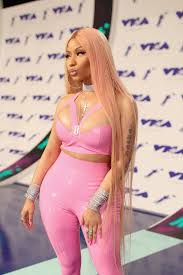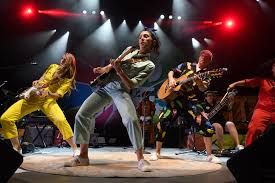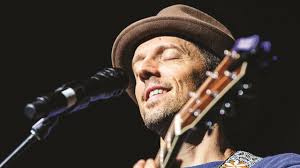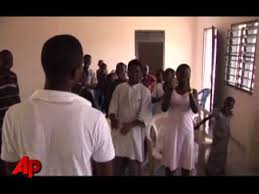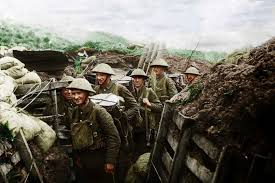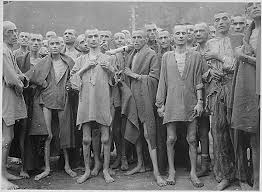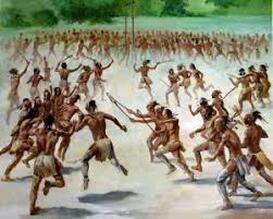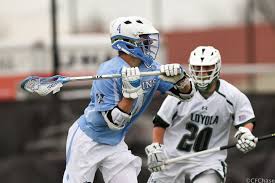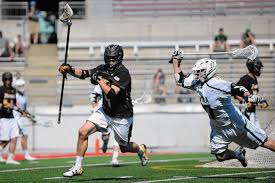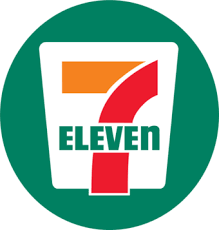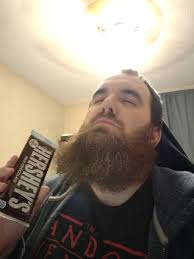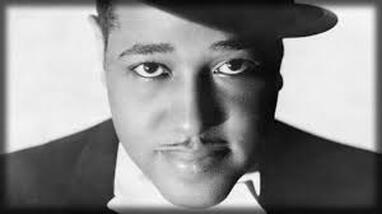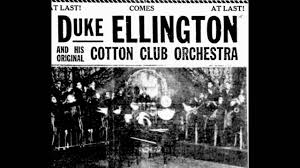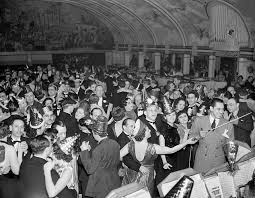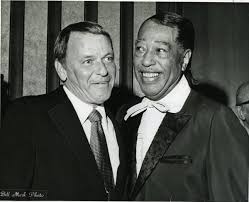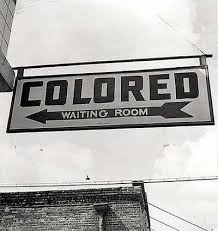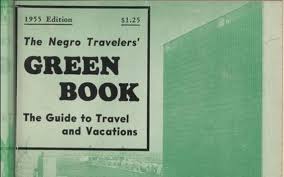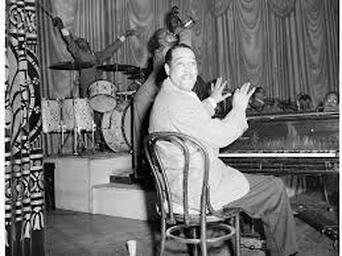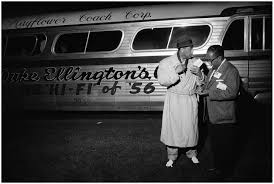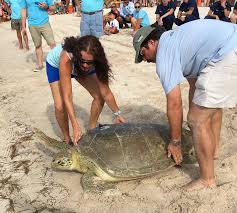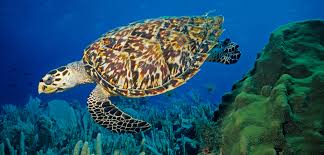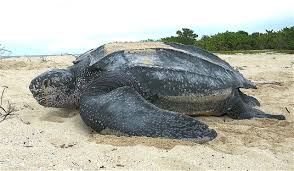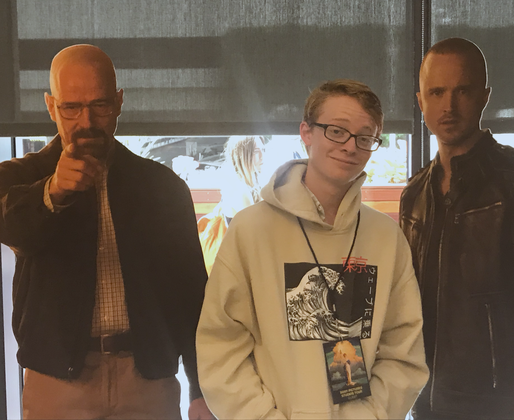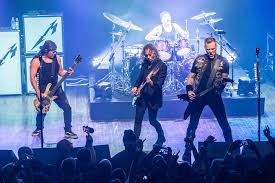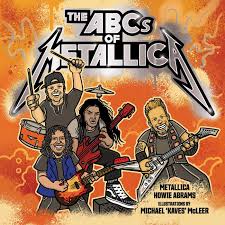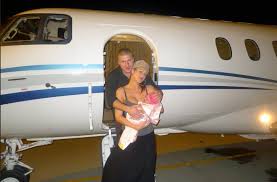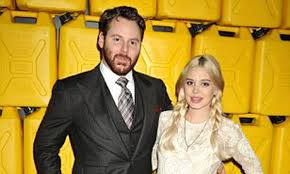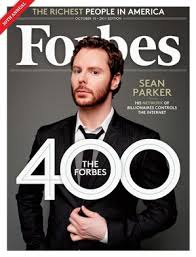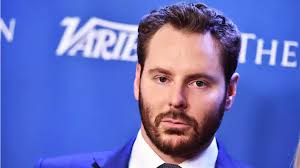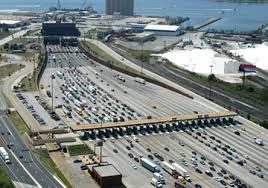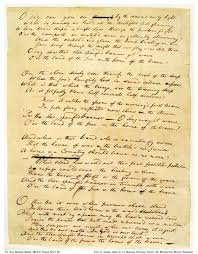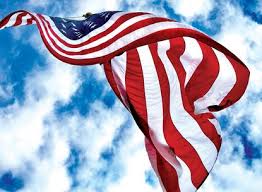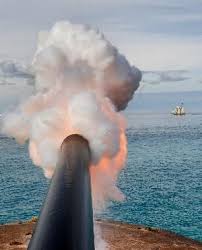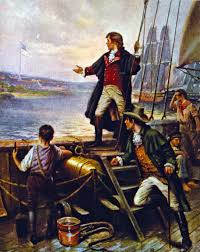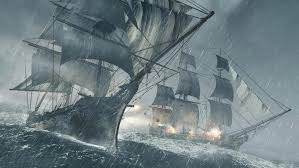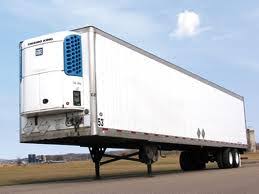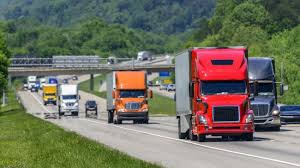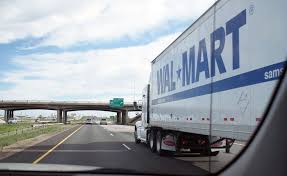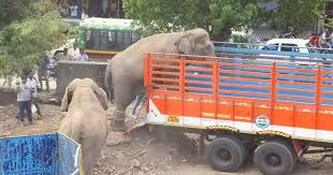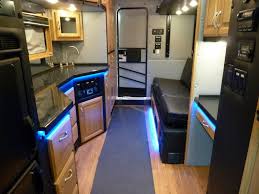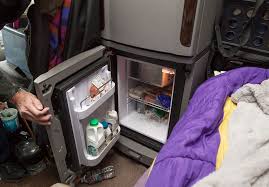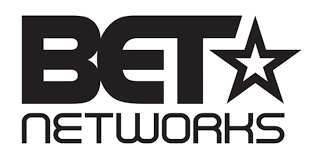|
Hear this Here at: Exit 35 I-278n: Calvary Cemetery, Maspeth and Woodside, Queens "Nikki Minaj's Pink Album is one of the top all time selling records in Hop Hop. If you listen to the Entirety of this RoadSpoke -- about 2 minutes long -- we will tell you how you can get it for 20% off. So Stay tuned." As you come up on the Calvary Cemetery, which with about 3 million burials, it has the largest number of interments of any cemetery in the United States. So you may naturally ponder mortality, immortality, death and even birth. “An immigrant to Queens, Onika Tanya Maraj was born on the Caribbean Island of Trinidad on December 8 nineteen eighty two. Her father is of Indian descent. He was a financial executive and part-time gospel singer. Her Mom, also a gospel singer, is of African ancestry. Onika's dad was an alcoholic and had a violent temper. He burned down their house in nineteen eighty seven. As a small child, Onika and a sibling lived with her grandmother in Saint James, Trinidad." The population of Trinidad is composed of two large ethnic groups of Africans and Indians from India — both of whom were brought in to work the once vast sugar plantations. Today, Trinidad is famous for celebrating the biggest and most outrageous Carnival in all the Caribbean. It’s probably bigger than New Orleans Mardi Gras. People in Trinidad, who call themselves Trinis, work for months to create the most imaginative and beautiful costumes. Then they party for days. This may have later resonated with little Onika when she finally found her calling. Seeking opportunity, Onika’s mother moved to New York to attend Monroe College, and later like many immigrants, brought the kids to Queens. No surprise she ran a strict household and her kids had structured times for study every night. Still living at home, her mom impressed upon her the need for higher education. But to attend college and to work menial jobs was mutually prohibitive. Plus she wanted to keep the dancing dream alive. So what’s a curvaceous lady to do? Onika today suggests she began moonlighting as a pole dancer earning large tips from appreciative men as she slithered and writhed in a stripper bar. During the day, she answered audition calls for song n dance while acting in off-broadway theater. Meanwhile Onika moonlighted on her moonlighting gig by singing back up vocals in rap videos. Using her actor chops Onika debuted various accents often conversing between several alter egos. But the debut in the R&B community was not just her songs’ characters but also her own — Onika Tanya Maraj became Nicki Minaj. No surprise, that tough attitude, resourceful work ethic, and frankly her signature backside got Onika noticed by the Hip Hop community. Rapper Lil Wayne saw her rapping in 2009 and was impressed. That November, she premiered with Gucci Mane and Trina on the remix of "5 Star Bitch" by Yo Gotti. Late in 2009, Nicki dropped her first solo album, Pink Friday. Pink Friday boasted 375,000 sales in week one and quickly became number 1. Soon she got a third name. Folks in the R&B community crowned Nicki Minaj “Queen of Rap.” Now hanging with other young stars like her pal Taylor Swift, Nicki also appeared on "BedRock" and "Roger That" on the compilation album, “We Are Young Money”. Largely due to her recent fame, the singles peaked at numbers two and 56, respectively, on the U.S. Billboard Hot 100. Other solo songs and albums followed. Her cumulative sales exceeded 100 million. To share some perspective, by comparison fellow New Yorker Billy Joel has sold 150 Million albums in his long career. Nicki Minaj is now celebrated as one of the all time greatest female rappers ever. Her rapping is distinctive for its fast flow and the use of alter egos. Early in her career, Minaj was known for her colorful costumes and wigs. Today, she does not need any shtick,unless she wants to! She has the most Billboard Hot 100 entries for a female artist in the chart's history, while being #9 overall. That said, she does love her outrageous outfits and the loud lifestyle. She even honors her Trinidad heritage by dressing for Carnival — whether she is shopping on Fifth Avenue or stopping traffic in Beverly Hills. Returning to the nearby graveyard theme, such accomplishments make Nicki Minaj -- not just a rags to riches immigrant -- but nearly immortal! If you want to claim 20% off a copy of the Pink Friday Album, you can claim it here by saying "Claim Pink Friday and RoadSpoke sent you." #NickiMinaj #Onika #HipHop #Stripper #Trindad #YoGotti #TaylorSwift #LilWayne
0 Comments
The song writer of mega LOVE ballads, “I’m Yours” and “I Won’t Give Up”… regularly uses this exit. EXIT 86a I-95s: to Poindexters, Virginia Are you feeling lucky? Ok good. Time for a Road Test. Here now are the “Fast Facts”, so pay attention especially you in the driver's seat. Because we are approaching the exit to Poindexters Virginia, let’s celebrate a guy who started out singing in San Diego, California. Jason Mraz is a singer-songwriter who first came to prominence in the San Diego coffee shop scene around 2000. With the release of his second album, “Mr. A to Z”in 2005, Mraz achieved major commercial success. The album peaked at number 5 on the Billboard 100. His musical style, from rhythmic feeling to his use of nylon string guitars, has been heavily influenced by Brazilian music. Which makes total sense since he is of Slovak heritage. However... This Brazilian influenced American of Slovak heritage was born and raised in upcoming Mechanicsville, Virginia. The lead single, "I'm Yours"became Mraz's first Top 10 hit on the Billboard Hot 100, peaking at #6 in September 2008. It ultimately spent 76 weeks on the Hot 100, longer than any other song in the magazine's 51-year history. Mraz won his first 2 Grammy Awards in 2010, for Best Male Pop Vocal Performance ("Make It Mine") and Best Pop Collaboration ("Lucky" with Colbie Caillat). Despite making hit singles he loves to work with Female vocalists like Colbie and Meghan Trainer with whom he made another hit, “More than Friends.”  Now for the deep stats, Dear Driver. You still following the numbers? Mraz lives a health-conscious lifestyle and has said that he eats mostly raw vegan foods. By day, his hobbies include surfing, yoga and photography. He owns a five-and-a-half acre avocado farm in Oceanside, California. Mraz is a social activist whose philanthropic efforts span wide-ranging issues, including the environment, human rights and LGBT equality. In 2009, he participated in a rescue mission to Ghana with members of Free the Slaves, a global nonprofit working to liberate children sold into slavery. In October 2015, Mraz announced his secret marriage to girlfriend, Tina Carano, in a post on his Facebook page. While he and his music are hot, his surname is Czech for "frost". Oh and one last thing… Jason has a tattoo that says "REST AREA" on his chest… not that he intends for it to be for his wife, but rather that he is a major fan of highway signage and thus… a natural advocate of all things “RoadSpoke!” Now for the Road Test. Yes or no, is Jason Mraz the name of a major musical talent and philanthropist... or an ice cream sandwich? #JasonMraz #ColbieCallait #MeghanTrainor #Lucky #Mechanicsville #Mraz #I’mYours #Poindexters #Lucky #FreetheSlaves EXIT of the DAY: Exit 75 I-95s to: Richmond, VA In 2017, while her party appeared to make a generational gain in power in a legislative chamber that has been under an iron Republican grip, northern Virginia journalist and part time Heavy Metal rocker, Danica Roem, made history. She became the first openly transgender candidate elected to the Virginia legislature. In fact, Danica unseated the state’s most prominent social conservative, Robert Marshall. Said House Minority Leader David Toscano, a democrat from Charlottesville: “It’s quite an experience to experience a tsunami election, and this is it!” The tsunami resulted from the electoral earthquake that put Donald Trump in the White House.
Roem was born and raised in Prince William County. Her father committed suicide when she was three years old, and her maternal grandfather acted as a father figure. Roem majored in journalism at Saint Bonaventure College in New York and became an award winning journalist. Fast Forward to 2018. Roem ran for the Virginia House of Delegates against anti-LGBT Republican incumbent Bob Marshall who held the office for the past 25 years. Marshall had authored the so-called "bathroom bill"and infamously referred to himself as Virginia's "chief homophobe" Having been born Dan Roem, Danica beat Bob by promising to be a voice of inclusion. So did she run on issues like gay rights, global warming or universal health case? Nope! Her main policy goal is reducing traffic congestion on Route 28. After all, all politics is local. Right? #Transgender #Virginia #Elections #Incumbent #BobMarshall #Richmond #DanicaRoem Hear this Here! Wendy’s Sign on I-95 approaching EXIT 27s in Florida. “Upcoming is a Wendy’s Restaurant. New Jersey 10th Grader Ace Kim loves Wendy’s so much he submitted this Road Test to the creators at RoadSpoke. Thanks Ace Kim! Writes Ace... "In his book "Dave's Way," Wendy’s founder Dave Thomas recalls how the family dressed up Melinda Lou, his 8 year old daughter, in a striped dress for the opening of the first location. To make her pigtails stick out, Mom put pipe cleaners in her hair. That's the little red-headed girl in the logo. Now time for a Road Test: So turn down the radio and listen up! This Road Test is not easy. The winner of this gets a free Frosty at the upcoming Wendy's. Here now are the Fast Facts: Fast food outlets are all along Interstates. You are all familiar with Wendy’s, Burger Kings, McDonald’s or my favorite, Jersey Mike's Subs. Believe it or not though, back in the 1800’s, establishments that sold just food were almost unheard of. Eating out was rare if largely unheard of. That is because everyone ate at home. Eating out was only something travelers would do. And so hotels, inns, or taverns may offer meals to their nightly guests but no one else. Then just before the Civil War, fine dining became a thing with rich people but mainly in big cities. Delmonico’s in Manhattan is credited with being one of the first eat-only places. All the fashionable and famous in the Big Apple would gather there to see and be seen. Then came the Civil War. Perhaps it was then with vast segments of the population traveling far from the farm did offering meals for pay become an idea. From the Civil War forward, inns, taverns or saloons would offer food to supplement the sale of their profit centers which was liquor or beer. But except for pickled or salted meats and vegetables, almost all food was cooked to order. There was no standardization of meals nor were meals pre- fabricated in industrial capacities. FAST FACT One: In the 1950’s Fast Food rose in tandem with high speed travel along interstates. Upcoming is a Wendy’s. Founded in 1969 in Ohio by Dave Thomas and named for his daughter, FAST FACT number Two: Wendy’s claim to fame is being the home of fresh, never frozen beef. Did you know that? Not frozen meat! The chain is also known for its square hamburgers, sea salt fries, and the delicious Frosty, which is a form of soft-serve ice cream. Fast Fact number 3: Despite being bashful and self effacing Dave Thomas held the record for appearing in his own commercials. He starred in them over 800 times. FAST FACT number 4: Remarkably his daughter Wendy never did. So while you may be familiar with all types of fast food, eating out, Dave Thomas and even Wendy’s fast food, well you nor anyone in America has ever met Wendy herself. Now for the Road Test: What was the name of Dave Thomas’ daughter… the one for whom Dave named the chain? If you said Wendy’s you would be wrong. Wendy was just her nick name. Melinda Lou was the daughter’s real name. So I tricked you! Still, if you get off at the next Wendy's in the next 10 minutes you get a free Frosty with any purchase of a burger. Now let’s get right to exit to Wendy's. But you got to tell 'em, Melinda Lou sent you! #Wendy’s #McDonald’s #AceKim #DaveThomas #Delmonico’s #BigApple #I95 #RoadTrip Happy Veteran's Day! EXIT 14B I-95s To: Jersey City, Hoboken, New Jersey In 1918, on the 11th hour of the 11th day of the 11th month... the Guns fell silent ending World War One. So this is now celebrated as Veterans’ Day. Hoboken and Jersey City were once the major disembarkation docks for a million Yankee Doe Boys who went to fight World War One in Europe. Jersey City is the second-most populous city in New Jersey, after Newark. As of 2014 Jersey City's Census-estimated population was 262,000 with the largest population increase of any municipality in New Jersey since 2010 representing an increase of almost 7% in 5 years. This bears testament to growing attraction of Jersey City as an appendage of immediate neighbor Manhattan. Insinuating itself into New York City, Jersey City is commonly called the "Sixth Borough" albeit one from a different state. Its proximity has increased its gentrification with Wall Streeters both as a residential neighborhood and as a corporate Back Office. Recently Goldman Sachs occupied a large Jersey City Skyscraper just across the Hudson from their main Headquarters on Wall Street. In 1911, The Hudson Tubes opened, expediting passengers to take the train to Manhattan as an alternative to the slower ferry system. Between Jersey City and Hoboken is where in 1920 they laid the Holland Tunnel a direct conduit to Manhattan's financial District. Jersey City and Hoboken, New Jersey were dock and manufacturing towns for much of the 19th and 20th centuries. Colgate Toothpaste and Clorox both started here. And Ticonderoga-Dixon pencils too... Much like New York City, Jersey City, New Jersey has always been a destination for new immigrants. In its heyday after World War One, German, Irish, Polish, and Italian immigrants found work along the docks in trade and shipping services. One famous Italian from Hoboken, was Old Blue Eyes himself, Frank Sinatra. As an act of sabotage on American ammunition supplies by German agents, the huge Black Tom explosion occurred in 1916 helping to prevent war materials from being used by the Allies in World War One. German spies ignited stored munitions leveling several blocks. While there were only 2 casualties, the Black Tom explosion was heard as far away as Trenton, New Jersey and Greenwich, Connecticut. #VeteransDay #BlackTom #BlackTomExplosion #ArmisticeDay #JerseyCity #Hoboken #GreatWar #Hoboken #GoldmanSachs #HollandTunnel #FrankSinatra 1 Facebook Post 130,000 Views!Exit 75 I-95n in NC To: Jonesboro Rd, near @Dunn,North Carolina Ok Road Trippers take a gander onto the shoulder on the right. See the hole in the ground and the sign about another Love’s Travel Store coming soon? Seeing that love is coming soon gets me all wistful and teary eyed. Why, you may ask? Well, seeing another convenience store rising from the red American dirt gets me very patriotic. America is still the land of the free and the home of the brave. It is also a place where with grit, luck, and smarts, anyone’s dreams can still come true. The convenience store chain, Love’s is still a family business. The c-store chain is owned by Tom and Judy Love. So now, dear Road-Trippers, Tom and Judy Love would like to make you an offer you cannot refuse. They would like to offer you the chance to get $5 of free Pepsi, Dorito, Lays and Gatorade products with any fill-up of over $20 in fuel at ANY Love's Convenience Store along all Interstate 95. That is right! Tom and Judy want you filling up -- and stocking up -- only at Love's all along the interstate. You might as well call it the "Lover's Lane". No? Ok...ok... maybe I am getting a little crazy here. To get this deal, remember to just tap the huge Deal Radar logo on your smart device and say out loud, "RoadSpoke, get me that Deal." This deal will be good for up to 7 days from when you start it, so keep on truckin' Road Crew. Likely you have passed thousands of Love's and other such fuel and food convenience stores in your life. Convenience store sales in general are huge. According to GasBuddy, as recently as 2017, Convenience Store sales were 60% bigger than all online sales. And that includes sales by Amazon! Wow, right? Well you could call Love’s the grand-daddy of the c-store industry. In 1964, Tom and Judy Love spent $5,000 to lease an abandoned gas station in booming Watonga, Oklahoma. Watonga is an hour northwest of Oklahoma City. They named their company Musket Corporation. Over the next 8 years, Musket opened 40 additional gas stations. But then came the Arab Oil Embargo… When the fuel crunch of the early 1970s began, gasoline was in short supply. Tom and Judy Love diversified for the sake of survival. They launched a new concept: the "Mini Stop Country Store." By adding groceries to their self-service fuel sales, Musket became one of the nation's first to offer one-stop shopping for road trippers. The so-called convenience store was successful and the company quickly opened more stores in western Oklahoma. In 1972, Musket set out to convert all of its locations from gas stations to convenience stores. By 1973, the company began using the family name instead of Musket. Love's Country Stores was the new name. By 1981, Love's Travel Stops & Country Stores celebrated its 100th store in small communities throughout Oklahoma, Kansas, Colorado, New Mexico and Texas. That same year, the company began offering the Fresh Daily Deli, sandwiches made fresh daily on-location. Food service became the company's third profit center along with self-serve gasoline and convenience store items. Despite the founders becoming some of the wealthiest people in America, with a net worth of around 7 Billion Dollars, Loves transformed its country theme but not its folksy service. Despite the mansions and flying around in private jets and yachting about in a 7 million dollar mega yacht, the Loves joint ventured with such regular folk eateries like Wendy’s, Dunkin’ and Taco Bell. The founders are still homey folk: the Loves expanded service to professional truckers with showers, overnight parking for big-rigs, and even barber shops. By 2014 the juggernaut had 300 locations; by 2016 it boasted 400 locations. It is still family owned. It is ranked number 18 on the list of privately owned companies.
In only 20 more miles is another exit and guess what? It also leads to a nearby Love’s Travel Store! Why not pull over and see what an American Success story looks like? And do not forget to fill up with at least $20 in fuel and you can get $5 off any Pepsi food or beverage purchases. Finally, consider this: the founders Tom and Judy may be looking down on you from their Gulfstream jet — not just with fondness, but with love. Billions and billions in love! #LovesCountryStores #TomLove #JudyLove #Oklahoma #Musket #WatongaOklahoma #GulfstreamJets #Wendys #Dunkin #TacoBell EXIT OF THE DAY: EXIT 46 I-95n To Fayetteville & Fort Bragg, NORTH Carolina Hear this .... HERE! "As you whiz through the verdant pine barrens of North Carolina, consider getting right to honor and visit a memorial inside an upcoming museum. Off the next EXIT is the Airborne and Special Operations Museum which is located at Fort Bragg. Fort Bragg is the home of the Army’s fabled 82nd Airborne. The 82nd’s specialty is to parachute behind enemy lines and forcibly attain their objectives. Inside the museum is a Special Monument dedicated to the unit’s liberation of Concentration Camps during World War 2. Thanks to the likes of the 82nd Airborne, the war ended fast in the spring of 1945. In the first week of May, the Allies overran the Nazis revealing for the first time the existence of death camps. Then the Nazis surrendered unconditionally on May 8 which today is known as VE Day. Thereafter, allies would come upon camp after camp exposing the crimes of the Nazi Regime. Six million Jews were brutally slaughtered during World War II. Also murdered were millions of other undesirable groups including slavs, gypsies, gays, and even the mentally and physically disabled. Back on May 2, 1945, the 82nd Airborne Division liberated its first death camp, Wöbbelin Concentration Camp. Days earlier, Wöbbelin had held some 5,000 inmates. When the 8th Infantry and the 82nd Airborne arrived they found deplorable conditions. Most of the only 1000 survivors were starving and diseased. They also found about 1,000 dead in the camp. Outraged by the denials of local people, General Dwight Eisenhower ordered the townspeople in Ludwigslust to visit the camp and bury the dead. On May 7, 1945, the 82nd Airborne Division conducted funeral services for 200 inmates in the town. The U.S. Army insisted "all atrocity victims to be buried in a public place." Crosses were placed at the graves of Christians and Stars of David at the graves of Jews. They also installed a prominent stone monument to memorialize the heinous crimes against humanity. Forced to attend the ceremony were citizens and captured Nazi soldiers. Hundreds of the 82nd Airborne division humbly paid their respects. In 1991, The 82nd Airborne Division was recognized as a liberating unit by the United States Holocaust Memorial Museum in Washington DC. Another display was installed here at the Museum. It is both an exhibit and a memorial. It shows the liberators and the victims and it is not to be missed. #82ndAirborne #AirborneandSpecialOperationsMuseumFoundation #FortBragg #VEDay #HolocaustMemorial #DwightEisenhower #ConcentrationCamps #Nazi #deathcamps Hear this right…. HERE! EXIT OF THE DAY: EXIT 100B I-95 southbound Maryland Border "Ok now, At-ten-tion! Listen up Road Crew. And that means you — the one with the hair. Watching Charli D'Amelio on TikTok... " "...Or Instagram. Or SnapChat. Actually this upcoming Road Test includes posting something with one of those online platforms and it means a bonus candy bar so pay close attention… This Road Test may qualify as a Million Dollar Milepost. It's brought to you by 7-Eleven. If you fill up with $25 in fuel at any 7-11 in the next 50 miles you will win a free Slurpy or similarly priced beverage. But you gotta play to pay. If you do get the RoadTest right and claim your prize, you can get any Hershey or Mars candy for free if you do a Snap or TikTok, Tweet, or post on Instagram in front of the next 7-Eleven, so here now is the Road Test and the Fast Facts: Welcome to the Oriole State! Speaking of Orioles, on September 6, 1995, Baltimore Orioles shortstop Cal Ripken Jr. aka The Iron Man breaks the record of Yankee great Lou Gehrig aka The Iron Horse for consecutive games played: 2,131. Cal Ripken, Junior might as well be a god to Marylanders. He’s played in 19 MLB All Star Games, and he has won two MVP awards. He’s no slacker. Strange coincidence, like that other work horse and legend Lou Gehrig who was born in New York City's Upper East Side and played for the hometown New York Yankees, Cal was born in Maryland and played his career with the hometown Baltimore Orioles. Even now in retirement, Cal is not taking it easy. He’s basically, like, the most charitable man in Maryland and is super active in establishing youth programs in baseball. In fact, you will pass his Cal Ripken, Junior Youth Baseball Camp in 1 minute coming up on the right. Keep your eye out to see Cal’s sports stadium. Speaking of local sports, Lacrosse is Maryland's unofficial state sport. Lacrosse was first played by Native Americans and entire villages essentially killed each other with sticks and rocks and used it to settle arguments. Since that time, nothing has changed. Maryland uses lacrosse to settle many disputes especially between colleges and high schools. In Baltimore, Maryland everyone loves the professional home teams like the Orioles and the Ravens. But the city splits into 2 vicious camps when local colleges Johns Hopkins University plays cross town rival Loyola University Maryland. But if you get into an argument you can always settle it by finding common ground. Just say you love Cal Ripken. No one in Maryland argues with that! Now for the Road Test: who is the sponsor for the Million Dollar Milepost? If you said 7-Eleven you are correct! But to qualify you need to get right to Exit and take part in the RoadSpoke offer by filling up your tank at the upcoming 7-Eleven. You qualify with a purchase of at least $25 in fuel and claiming a free Slurpy or beverage. And of course you cannot qualify unless you tell them Cal Ripken and RoadSpoke sent you! Oh Yeah. And about the Hershey’s or Mars brand candy bar including M&M’s. "If you Tweet, Snap or post a selfie at the 7-Eleven, show the cashier and you will get a bonus prize. You can choose a regular size candy.
Just remember, somewhere out there is a Million Dollar Milepost! But like the great Cal Ripken Jr, you got to play! Carry on Road Crew. Over and Out!" #CalRipkenJunior #BaltimoreOrioles #Lacrosse #JohnsHopkins #LoyolaUniversityMaryland #MLBBaseball #LouGehrig #IronHorse #IronMan Swing Music up: Duke Ellington’s Jungle Nights in Harlem. EXIT of the Day: EXIT 44 I-95n to West Palmetto Park Road. On April 29, 1899 Edward Kennedy Ellington, America’s greatest composer, was born up in Washington D.C. to Daisy and Jim Ellington. At the dawn of the 20th century, Washington DC was actually the biggest African American community. It was attractive to African Americans because of high paying jobs in the growing metropolis but most of all, because it managed to flout the Jim Crowe humiliations just across the river in Virginia. Both of young Edward's parents were amateur pianists and taught their son opera and gospel music. Mom Daisy had ambitions for her handsome son and she dressed him well and insisted he learned proper manners. Young Edward’s regal bearing soon earned him the name, "Duke". And so not far into he’s teens, Edward Ellington faded from history and Duke Ellington was born. Despite his parents ambitions, in his teens, Ellington had dreams of becoming first a baseball player, then an artist. But instead, being musically gifted, he started a small band called the Washingtonians that evolved into The Duke Ellington Orchestra. In the "Roaring Twenties", the group’s big break came when they travelled to New York and won the job of house band for Harlem’s Cotton Club. New Orleans Blues, Ragtime, and a whole lot of Swing… it all went into the rich mix that made up Duke Ellington's groundbreaking Big Band jazz. Always borrowing from other genres, Ellington soon composed tropical Latin themed pieces and exotic-sounding ensembles that were called “jungle music”. You are listening to Jungle Nights in Harlem now and can Claim the Duke Ellington song now by saying, "Claim my Duke Ellington song and RoadSpoke sent me!" After the Cotton Club’s heyday in the 1920’s, Ellington’s band toured tirelessly. Not long after World War Two, in 1950 he toured Europe and played 70 of 74 nights. Some years he played 340 nights. The Duke worked with almost every great musician of his time from Count Basie, Ella Fitzgerald, to Frank Sinatra, and Nat King Cole. Ellington took his band on the road for thousands of gigs: clubs, concerts, dances. Despite white demand for his music, he was not welcome in many towns along the way. In 1955, on a Tour of the South, the Duke came here to Boca Raton, Florida. In 1955 Florida, the greatest band leader in the United States was forced to stay in run-down Negroes Only Motels. There are images of The Duke and his band playing baseball outside his hotel amongst the palm trees. Still, he was only allowed to visit certain stores and restaurants denoted by the Jim Crowe era Green Book. The Green Book was a motorist guide written by Harlem post office employee, Victor Hugo Green. The Green Book provided African American motorists information about safe motels and restaurants that welcomed Black travelers. Otherwise blacks were persecuted and denied access throughout the south. In fact entire towns had sundowner laws that said that African Americans had to be out of town by dark or they may be brutally treated. Updated regularly, The Green Book became the one of the Biggest selling travel guides of its era. . Step into the wrong shop or cafe and a black man could get beaten or worse. A World Famous performer like Duke Ellington was treated no better. Still, throughout all Duke’s non-stop touring, he managed to compose dozens of hit songs that found their way into the Great American Songbook :“Sophisticated Lady,” “Mood Indigo,” “In a Sentimental Mood,” “Don’t Get Around Much Anymore,” “Take the A Train”, “I’m Beginning to See the Light,” “Cotton Club Stomp” and “Satin Doll”. He worked until the day he died in 1974. The breadth, importance, and significance of his music has only grown in the succeeding decades. The triumph of his artistry stands in stark contrast under the conditions from which it sprung. Almost 30 years after his passing, in 1999 Duke Ellington was awarded the Pulitzer Prize. On February 24, 2009, The United States Mint issued a 25 cent coin with Duke Ellington on it, making him the first African American to appear by himself on a circulating U.S. coin. The Duke appears above “E Pluribus Unum” on the reverse side of the District of Columbia quarter. And finally, not to be out classed, in 2011, the Duke received a posthumous star on the Hollywood Walk of Fame. From Jim Crowe to Pulitzer Prize, by way of Boca Raton, Florida… one never knows where your road will lead you. But just like the Duke, you got to keep on driving. #DukeEllington #Greenbook #VictorHugoGreen #SatinDoll HEAR THIS RIGHT... wait for it... right... one more second and ... Right.... Here! I-95 Exit 25 in FL To: FL 84, Marina Mile Boulevard [~ 0.44 mi to Exit 24, ~ 1.24 mi to Exit 26] Tourism in Florida is big business. The City of Fort Lauderdale tries hard to accommodate all visitors. However, some special visitors often collide with people on Florida’s coastlines. There are four species of sea turtle who visit Florida regularly. One, the Hawksbill Sea Turtle, remains in the sea and is sometimes seen around coral reefs. They were once hunted nearly to extinction for their luminescent shells which were used for eye glasses and ornaments. Three other species nest on nearby beaches. One of the rarest is the loggerhead sea turtle. Possibly even fewer in numbers is the huge Leatherback Sea Turtle which also show up locally. Leatherbacks can grow to over one thousand pounds and range the Atlantic from the Caribbean to Iceland and back. The loggerhead’s range is less expansive. However, only egg laying females of all breeds ever leave the ocean and then only to lay eggs. Being on the beach is a very vulnerable time for these slow moving visitors, which is why Fort Lauderdale’s environmental interests are so concerned to accommodate these special tourists. Florida’s Department of Fish and Wildlife Conservation Commission writes: “The Florida coast is the second most popular nesting area in the world for Loggerhead Sea Turtles. Nesting season in Broward County and on Fort Lauderdale's beaches begins in early March with Leatherbacks, followed by Loggerheads in April, and Greens in May and June. Females come up from the water to make their nests and deposit over 100 eggs on average in the sand. Approximately six to eight weeks later, the hatchlings will make their way from those nests to the ocean using the reflection of the moon on the water as a guide. Therefore, a common threat to sea turtles is disorientation caused by other sources of light. The City of Fort Lauderdale has adopted laws in its Code of Ordinances to help protect sea turtles that nest and hatch on the beach. This ordinance is designed to reduce the impact of artificial lighting on sea turtles by restricting it during both the nesting and hatching season (March 1 - October 31)." According to the City of Fort Lauderdale’s website “The City works diligently to map sea turtle nests, set up protective barriers where necessary, post lighting guidelines and to support night walks to watch over hatchlings as they make their way to the water. We also rake our beaches each day, capturing debris such as cigarette butts and plastic items which can be harmful to sea turtles and all marine wildlife. There is a lot that our neighbors can do to keep these lovely stars of our seas healthy and happy in our City. To learn more, and to find education and volunteer opportunities, visit Broward County's Sea Turtle webpage."
Happy Passover! Mix a Prankster, Stolen Music, & an App & You get What? A Napster Billionaire!4/22/2024 This Submission was supplied by Dash VerPlanck, a sophmore at Stanford University. No doubt being a Stanford in the middle of Silicon Valley makes any student there acutely aware of the nearby kids who are creating apps and tech that could become the next billion dollar unicorn... kind'a like RoadSpoke. Thanks Dash! Hear this here: EXIT 169 I-95s To: Franconia, Virginia and Springfield, Virginia "Never content with just one gig, super hacker whiz kid Sean Parker attended nearby Oakton High School and Chantilly High School. When little Sean was 7, his father taught him how to program. Parker’s father, who put his family before his entrepreneurial dreams, told Parker "If you are going to take risks, take them early -- before you have a family." Maybe Dad also should have told Sean not to break the law. Or maybe not. One night, while hacking into the network of a Fortune 500 company, Sean was unable to log out after his father unplugged and confiscated his computer keyboard. Because his IP address was exposed, FBI agents tracked down and convicted the 16-year-old. Since Sean was under 18, he was sentenced to community service. Rewind a year. When Sean was 15, he met 14 year-old Shawn Fanning over the Internet where the two bonded over esoteric topics like theoretical physics. Now fast forward a few years. The 2 Shawns co-founded Napster, a free file-sharing service for music. Only problem was, they did not tell the musicians they were freely sharing their songs. Within one year, by June 2000, Napster with its black cat logo had tens of millions of users. Lawsuits by various celebrity musicians including Lars Ulrich and heavy metal band Metallica eventually shut down Napster. Napster had been called the fastest-growing business of all time. Depending on your perspective, it is credited or demonized with revolutionizing the music industry, and is considered to be a precursor to Apple’s iTunes and Spotify. Incidentally, Spotify one day would ask the original music Napster for an early investment and later Sean even join Spotify’s Board of Directors. But that is not surprising since Sean has been an early participant in several startups. Rewind again to the early two thousands. Trolling his desktop in 2004, Sean Parker saw a site he found interesting. That website showed images, profiles, and shared information and musings of college students. The website was called "The Facebook". He contacted the Harvard student, Mark Zuckerberg who hired him as President. Sean famously advised Mark to change the name from "The Facebook" to simply "Facebook". Mark Zuckerberg said "Sean was pivotal in helping Facebook transform from a college project into a real company." Later in 2014, no less than Justin Timberlake would play the part of Sean Parker in the major motion picture, THE SOCIAL NETWORK. Sean Parker is now fully reformed. He is married to the beautiful artist Alexandra Lenas. They have two kids. While Sean's tenure as Facebook President ended he is still a major Facebook shareholder. Sean now busies himself being a big time philanthropist. The former black cat hacker who grew up off the next exit is personally worth over three billion dollars. A husband and father, he travels with his brood in private jets. Ironically, Sean now hangs out with the same Musicians he used to rip off. He makes the scene with Lady Gaga and Snoop Dogg. In fact, Sean has even friended his old nemesis Metallica. They kissed and made up in a very public way -- onstage and infront of thousands. Giving away tens of millions, Sean is a major establishment figure in Silicon Valley. His Sean Parker Foundation’s main targets are eradicating malaria, understanding allergies, and yes, even curing cancer.
Not bad for a former juvenile delinquent from Virginia, right? #SeanParker #OaktonHighSchool #ChantillyHighSchool #Facebook #JustinTimberlake #MarkZuckerberg #ShawnFanning #FranconiaVirginia #SpringfieldVirginia #SnoopDogg #Metallica #Spotify #LadyGaga Hear this right as you enter the tunnel… EXIT 55 I-95n: Fort McHenry Tunnel entry “Ok Road Trippers, listen up. And you in the driver’s seat, please turn on your headlights, cause you are going down! Not to be confused with the Francis Scott Key Bridge that recently fell into the river, you are going down into a tunnel of the same name. But no worries. The tunnel is safe! The official name of the tunnel ahead is the Francis Scott Key Tunnel named for the prisoner of war who wrote the poem that became America’s National Anthem. It was during the War of 1812 and the war was going badly for the United States. Still angry about losing the Revolution over 20 years earlier the invading British were attacking Baltimore. They would at one point march down the road to nearby Washington DC. There the invasion force burned down the White House. Fast Fact: the National Anthem was a poem that grew to be hugely popular years before it was ever set to music. Fast Forward to 1985; the 8-lane Fort McHenry Tunnel became part of I-95. The Tunnel crosses under the Patapsco River south of Fort McHenry, and connects Locust Point and the Canton areas of Baltimore City. You are about to go under the famous Fort McHenry whose bombing inspired that Prisoner of War, Francis Scott Keys to write what would become the National Anthem. As a POW aboard a British ship, he had witnessed the British bombardment of Baltimore's final fortification and before going to sleep, he assumed the end was imminent for the new nation. When the sun rose in the morning of September 14, it shone on the last shreds of the American flag. Like the song says, “Wow! Our flag was still there!” After nearly 24 hours of shelling, the huge British fleet almost immediately ceased fire. Frustrated and low on ammo, the Brits released Francis Scott Key and their other prisoners. Then they surprisingly withdrew. Months later, a peace treaty was signed over in Belgium.
According to Smithsonian Magazine, “Although neither side achieved decisive or lasting military gain, the War of 1812 did have beneficial consequences for the United States. The nation emerged stronger at least internationally. No matter how poorly prepared the United States had been, the government’s readiness to take up arms against a mighty foe substantially enhanced American prestige abroad. Former President Thomas Jefferson said the war demonstrated that “our government can stand the shock of war.” Delaware Senator James Bayard expressed a commonly held sentiment when he vowed: “It will be a long time before we are disturbed again by any of the powers of Europe.” Indeed, within a decade, President Madison’s successor, James Monroe, formulated the Monroe Doctrine, which put “European powers” on notice that the United States would tolerate no further incursions on the “American continents.” From skirmishes with European powers trying to run un-taxed cargo into the United States to the Russians placing Missiles in Cuba, America has been the police man of the Western Hemisphere. Good or bad, no world Wars have happened here under this “Pax Americana”. From the harbor above you, ripples went out into the world. The United States had come of age. #PaxAmericana #FrancisScottKey #NationalAnthem #StarSpangledAnthem #Baltimore #1812 #MonroeDoctrine #ThomasJefferson #FortMcHenry I-95 northbound (NJ Turnpike) EXIT 10 to I-287 (Edison Tpk), Matuchen & Perth Amboy, New Jersey Ok Roadtrippers now it's time for a Road Test. So prepare yourselves for the Fast Facts! The winner of this Road Test gets not just a free Big Gulp at the next 7/11 off Exit 10 but also gets paid $20 by the driver… Driver, eyes on the road! Ok now, that is a good place to start. The road. Look around you. Likely you see large trucks composed of two units. The truck and the load. We call these big rigs "18 wheelers", or semi trucks or simply semis. They are big and powerful and do a lot of good. Big names in Trucking include Werner, Covenant, and JB Hunt. Also you see a lot of public companies represented like Amazon and Walmart. You might speed by them on the highway without thinking much about all that, but there's a lot worth knowing. Frankly, we at RoadSpoke can wax poetic about any one Fast Fact about trucks and trucking companies and the logistics industry but just for this Road Test we are going to discuss 18 wheelers from an over-broad perspective. The facts reveal that they are essential to the lifeblood of America. What you probably don't know about them will surprise you. Listen up! Now for the Road Test so here come the Fast Facts,: Fact One: 18 wheelers transport over 70 percent of the goods in the United States. That’s right; more than railroads or other things. They are the source of food on supermarket shelves, Amazon deliveries, even gas in your car. Two: The maximum weight for a truck and full trailer is 80,000 pounds. To visualize that, it’s about 20 Indian Elephants. Ok that’s weird but it works for me. Three: In 2016, according to Popular Mechanics Magazine, semitrucks drove 175 BILLION miles. Four: Recent estimates suggest trucks deliver about 60,000 pounds of goods per American — per year. That’s a lot of stuff, right? In fact it comes out to about 18.5 Indian Elephants. So each truck is almost entirely dedicated to you. Think about that. Five: Truck Drivers work hard but by law must take rest stops every 8 hours. So yes most trucks have sleeper space behind the cab. The amount of luxury varies. But it is not uncomfortable back there. Even basic sleeper cabs incorporate tables, closets, refrigerators, flatscreen TV mounts, and, of course, beds. Six: Some Sleeper cabs can accommodate even a small family or a pair of spouses. They are not likely, however, to accommodate an Indian Elephant. Fast Fact Seven: Spouses who both drive the truck are called a Tag Team. Now for the Road Test: you have 3 seconds to answer. Now for the quiz: How many elephants are accommodated in a sleeper cab? Three. Two, and one. If you said none, you win! Ok Driver, cough up. Pay the genius twenty bucks. And be quick about it because you gotta get right to Exit. 7/11 owes you a Big Gulp. Just tell em the Spoken Road sent you! #18wheelers #PepsiProducts #JBHunt #Werner #Covenant #Semitrucks #PopularMechanics #IndianElephants #sleepercabs Long Island's Jackie Robinson FreewayRoadSpoke’s EXIT of the Day: EXIT 8 on I-678n aka the Van Wyck Expressway, the EXIT for the Jackie Robinson Expressway near Kew Gardens in Queens, New York Today in 1991, BET Networks, was the first African-American company listed on the New York Stock Exchange. Robert Johnson was the media company’s CEO and Founder. So in honor of that first as well as the End of the World Series...... we will revisit another first. And they are related since Number 42 went on to become the first African American TV sportscaster.... Like most New York Super Stars, baseball great Jackie Robinson came from somewhere else only to make it BIG in the Big Apple. Jackie Robinson was the first African American who blasted through the Major League Baseball color barrier when The Brooklyn Dodgers started him at first base on April 15, 1947. The Brooklyn Dodgers effectively ended racial segregation which had relegated black players to the Negro Leagues since the 1880s. In his first year, Jackie faced a lot of abuse. But he persevered quietly. And successfully. In an ultimate act of revenge, Jackie was the recipient of the First Ever "Rookie of the Year" Award. Robinson was born into abject poverty, as a sharecroppers son in rural Georgia. He went on to become an All-Star for six consecutive seasons from 1949 through 1954, and won the National League's Most Valuable Player Award in 1949—the first black player so honored. Robinson played in 6 World Series including the Dodgers' 1955 World Series championship. In 1962, Robinson was inducted into the Baseball Hall of Fame. After his pro career, he celebrated many other firsts. He was the first African American Sportscaster. He was the first African American to sit on the Board of Directors of a Fortune 500 Company, The Chock Full O'nuts Coffee Company. After his death in 1972, Robinson was awarded the Congressional Gold Medal as well as The Presidential Medal of Freedom. Then in 1997, Major League Baseball "universally" retired his uniform number, Number 42. But for one exception, all major league teams will never award an athlete with Jersey #42; he was the first pro in any sport to be so honored.
But there is one exception... On April 15, 2004, Major League Baseball also adopted a new tradition, "Jackie Robinson Day". That day, EVERY player on EVERY team wears Number 42. But in some sense -- every day is Jackie's Day... no more so than today when a Black Entertainment Network was born — and people of color play on every professional sports team including the Houston Astros and the Washington Nationals. #JackieRobinson #BETNetworks #42 #WorldSeries #Baseball #MLB #ChockfullofNuts #JackieRobinsonDay #ThePresidentialMedalofFreedom #BETNetworks Cos Cob, Connecticut on Mianus River Bridge Ok Road Trippers, upcoming is a Road Test, so pay attention. Here are the Fast Facts. You are now driving across the Mianus River Bridge above commercial buildings in Old Greenwich and Cos Cob. Nowadays not investing in America's infrastructure is a hall mark of our Congress. In 1983, the Bridge on which you drive, collapsed. Yup, the entire northbound side fell in. Three people were killed and three others were seriously injured. Casualties from the collapse were few because the disaster occurred at one thirty in the morning when traffic was low. Perhaps in some kind of Karmic revenge the one car that drove off the bridge was a recently stolen BMW containing the 3 car thieves. All the occupants died in the fall. In the nineteen fifties, investing in Connecticut’s infrastructure meant short term costs for smart long term gains. So while Connecticut lost many wartime factories following the end of hostilities, by investing in Highways, the state shared in a general post-war expansion that resulted in solid growth in suburban areas. One strong supporter of Long-term Infrastructure improvements was Greenwich native, Senator Prescott Bush. In conjunction with Republican President Dwight Eisenhower, Senator Bush saw the need to invest in a coast to coast Interstate Highway system. Senator Bush represented Connecticut in the United States Senate from 1952 to 1963; his son George Herbert Walker Bush and grandson George Bush both would become Presidents. Now for the road test: What was Senator Bush's first name? #MianusBridge #InfrastructureInvestments #PrescottBush #PresidentBush #Old Greenwich #Connecticut #CosCob #OldGreenwich |





